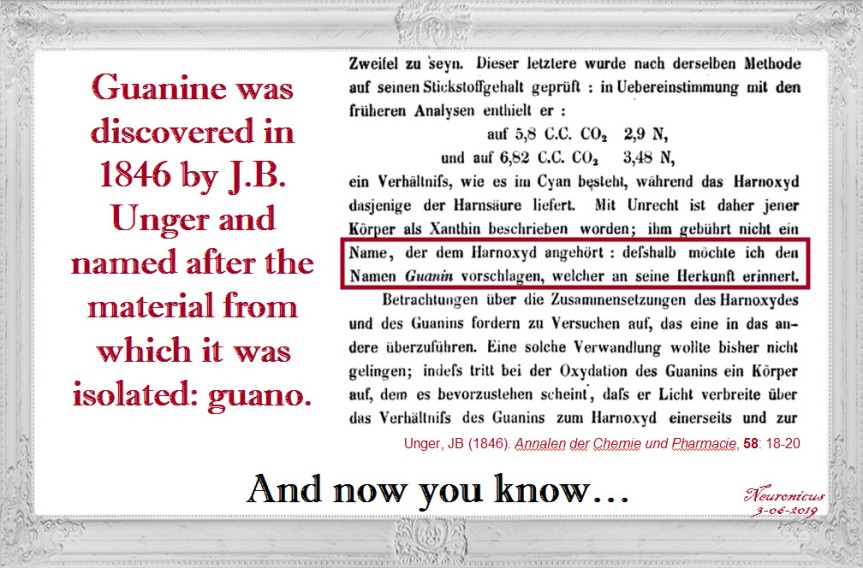This is about naming things in science. You have been warned!
The DNA is made of four nucleobases: adenine (A), thymine (T), cytosine (C) and guanine (G). The “letters” of the code. Each of them has been named from where they were originally obtained by the scientists who first identified and/or isolated them.
Adenine was named thus because it was extracted from the pancreas of an ox, which is aden in Greek (the pancreas, not the ox), by the Nobel laureate Albrecht Kossel in 1885.
Thymine comes from thymic acid, which was extracted from the thymus gland of calves by the same Albrecht Kossel and Albert Neumann in 1893.
A year later, the duo named cytosine, another base obtained from the same thymus tissue. Cyto- pertains to cells in Greek.
Fifty years before that, Julion Bodo Unger, a German chemist, extracted the guanine from the guano of sea birds. Why was he looking at bird poop, curious minds inquire? Because he was studying it for its uses as fertilizer. The year of discovery was 1844 and the year of the naming was 1846.
And now you know…

REFERENCE: Unger, JB (1846). Bemerkungen zu obiger Notiz (Comments on the above notice), Annalen der Chemie und Pharmacie, 58: 18-20. From page 20: “ … desshalb möchte ich den Namen Guanin vorschlagen, welcher an seine Herkunft erinnert.” ( “… therefore I would like to suggest the name guanine, which is reminiscent of its origin”.) (Wikipedia translation). Google Books | Google Book PDF
By Neuronicus, 3 June 2019

